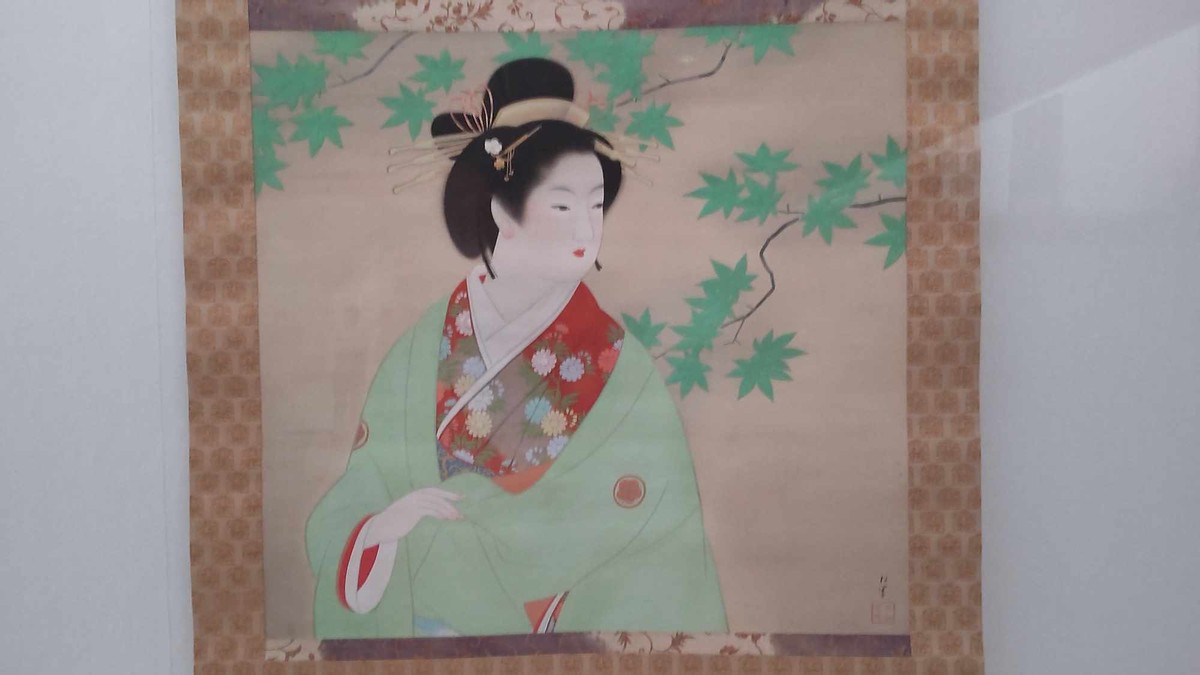
Today I went to the Osaka Nakanoshima Art Museum with a friend to see a Uemura Shōen's art show. To be honest, I was not so interested in her art at first, and I was more looking forward to having lunch with her. I'll write about that in another journal entry.
Uemura Shōen is well known for beautiful women's portraits in kimonos in the Nihon-ga (Japanese style of painting), and this year is the 150th anniversary of her birth. So, the museum is featuring a special exhibition of her art.
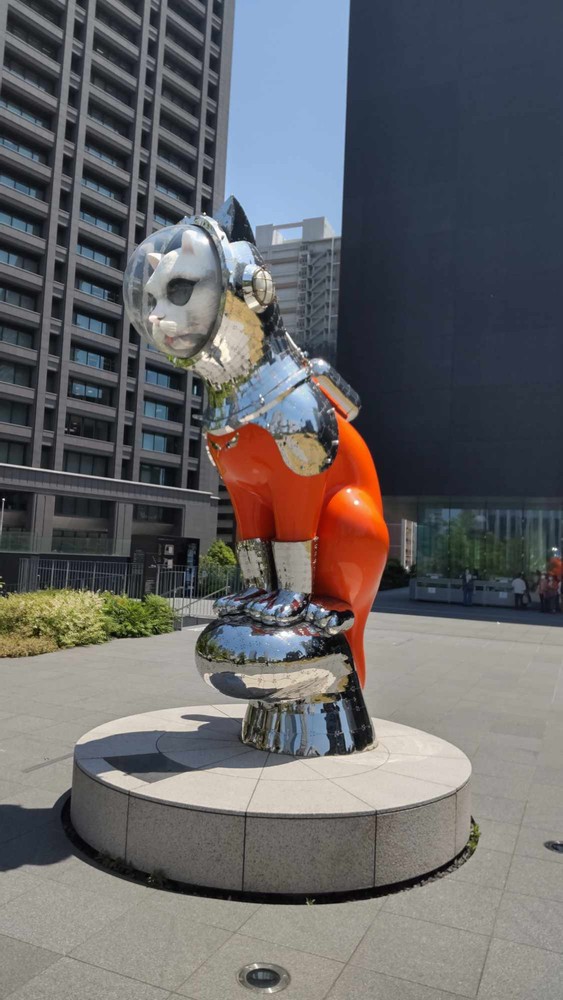
Two large posters greeted us at the entrance of the exhibition. Since photography was allowed for some of the artworks, I'd love to share them with you.
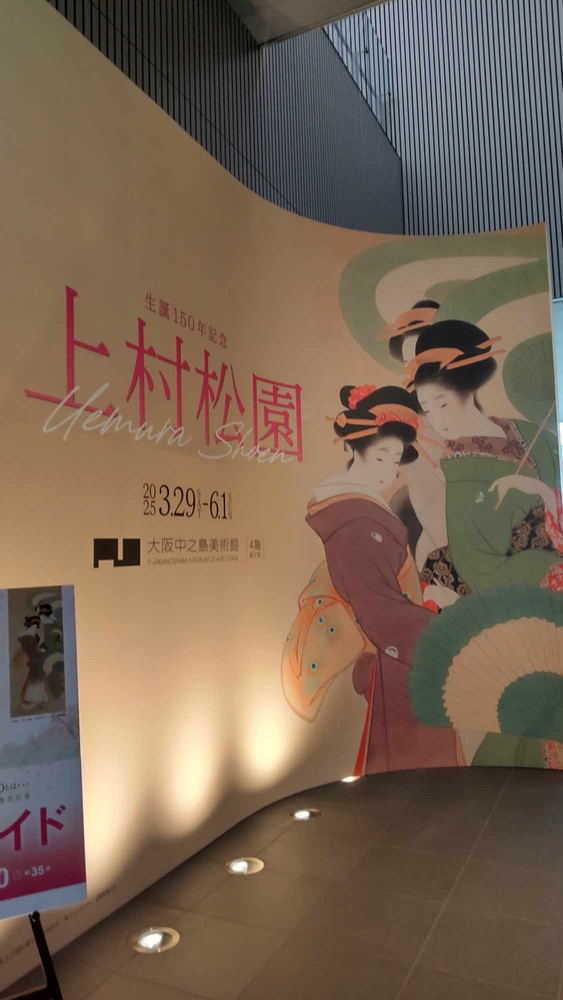
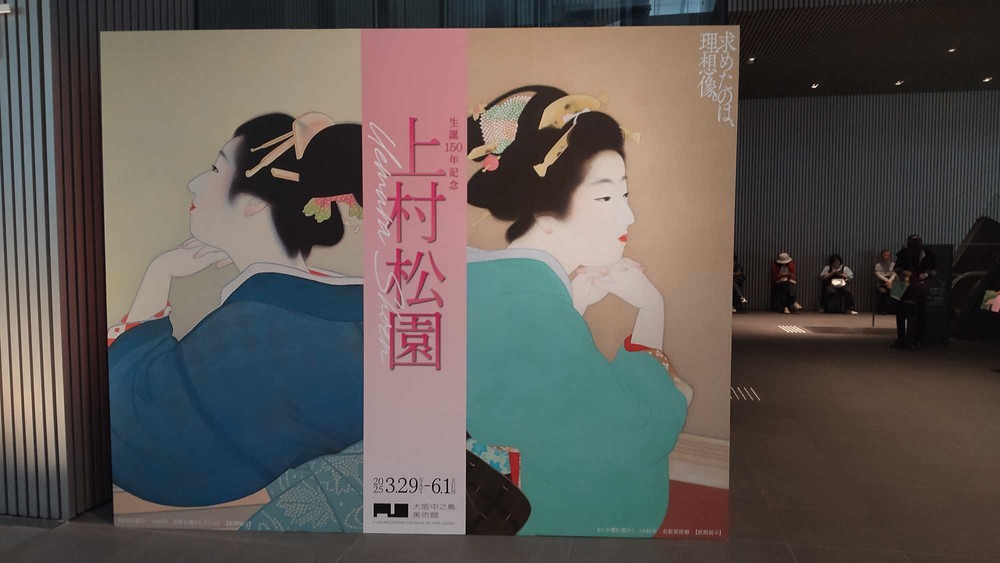
Uemura Shōen was one of Japan's female paintes, and she gave huge influence to later generations of female painters. She was born in Kyoto, so she painted lots of women in the region. We can learn about the culture, lifestyle and fashion of Kyoto during the Meiji, Taisho and early Showa periods through her paintings.
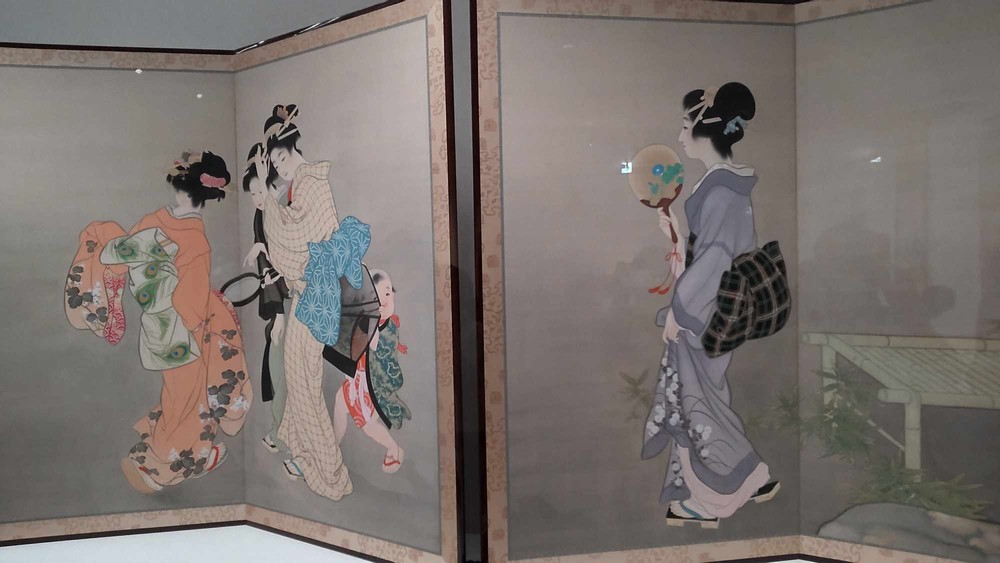
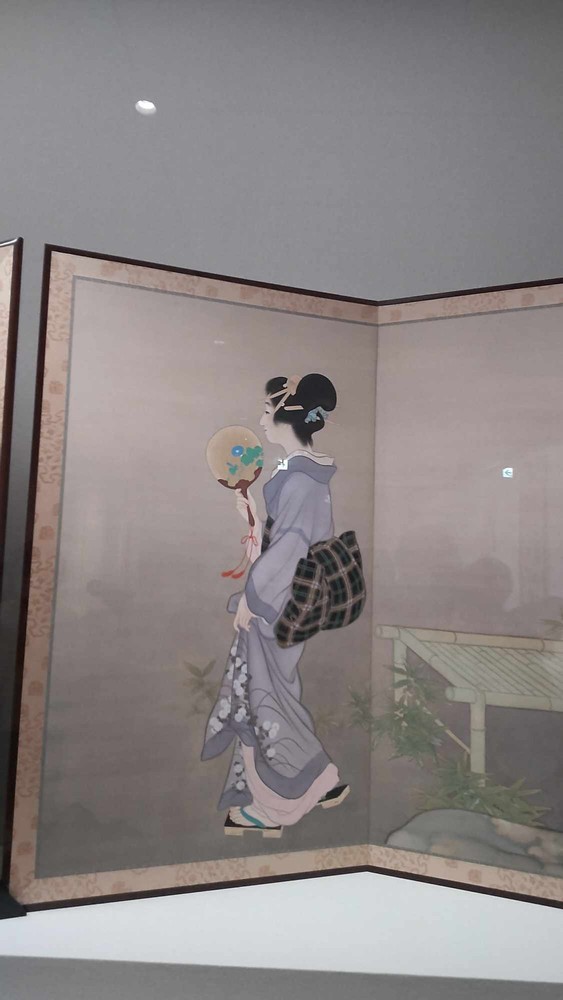
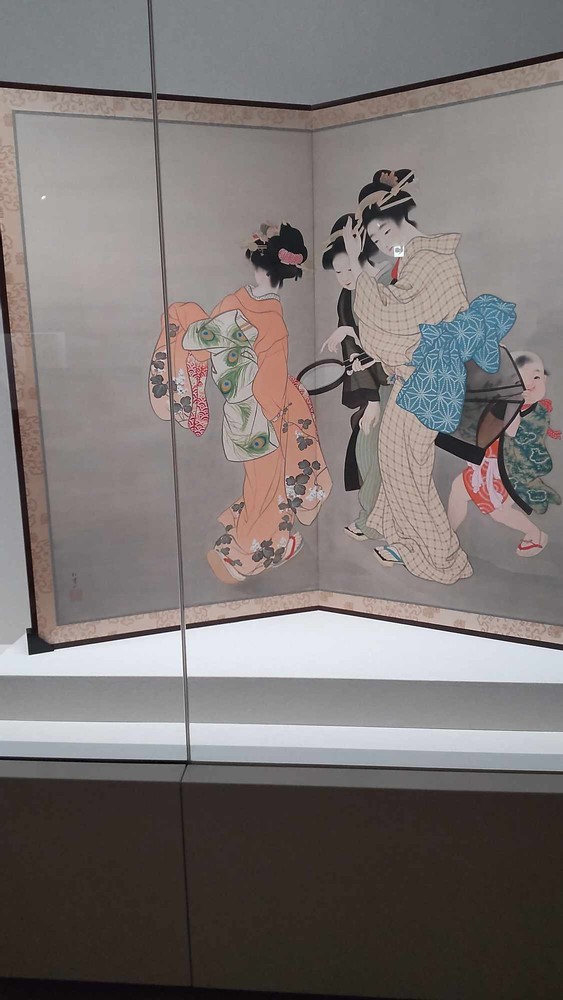
She often painted mothers and children. She herself was also a mother, but she'd never married. Back then, raising a bastard child was extremely tough in Japan. Her mother had kept supporting her until she passed away.
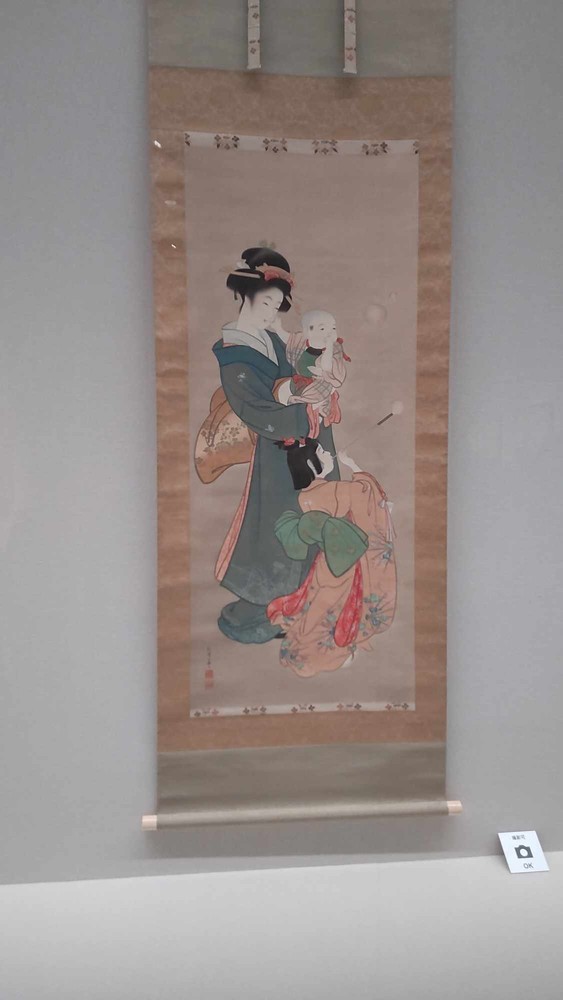
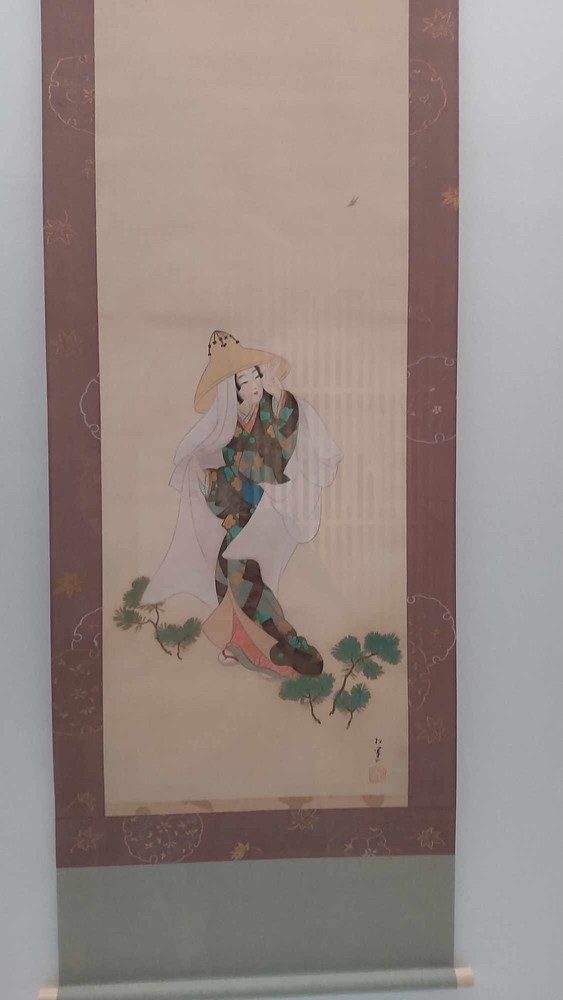
She kept painting Bijin-ga (paintings of beautiful women) and eventually created her own style. Prince Arthur who was the third son of Queen Victoria of the United Kingdom purchased one of her art pieces. Later in her life, she was awarded the Order of Culture and became the first female artist to receive it.

As I learned more about her, I became increasingly inspired by her work. I really admire her sophisticated painting style. She was so good at describing soft, modest, feminine beauty. It took her sixty years to completely create her own style. I was deeply admired by her determination.
I saw a photo in her process. Japanese style of painting is quite different from Western styles, and painters don't use easels. They spread a large sheet of paper on a floor (traditionally on tatami mats) and sit in the seiza position (kneeling with legs folded underneath, which most people today, including me, find difficult). They would paint in the position for hours.
The exhibition also displayed her brushes, paints and other painting surprises. Before seeing them, I assumed that she must have used very fine brushes because her paintings look extremely delicate. So, I was a bit surprised when I saw her brushes. They were quite thick. Now, I'm very curious how she controlled such thick brushes.
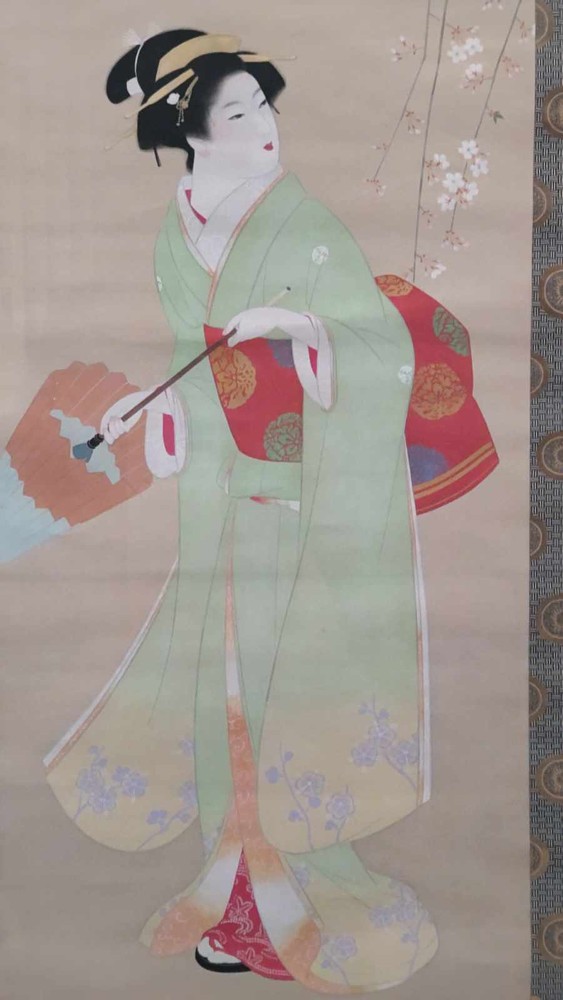
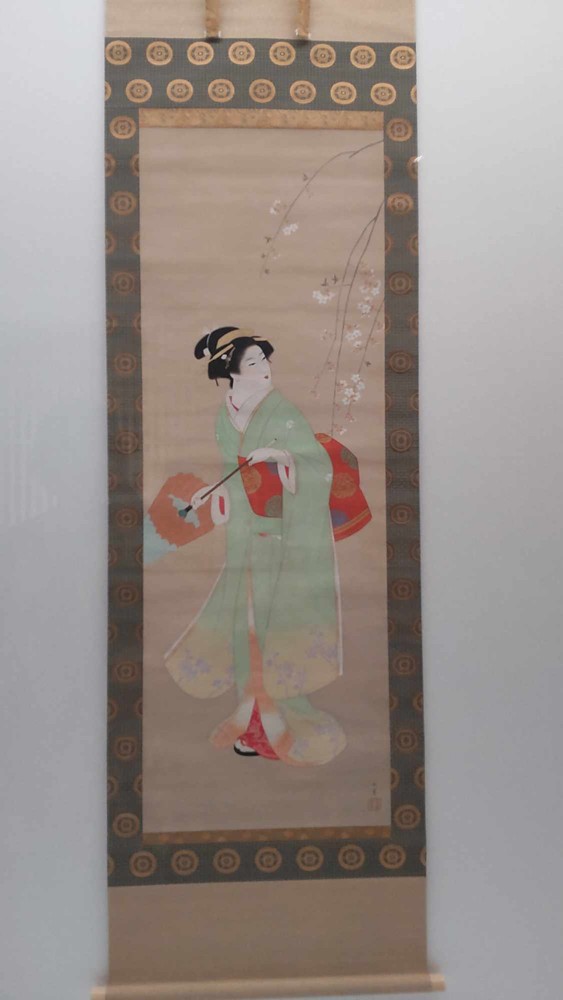
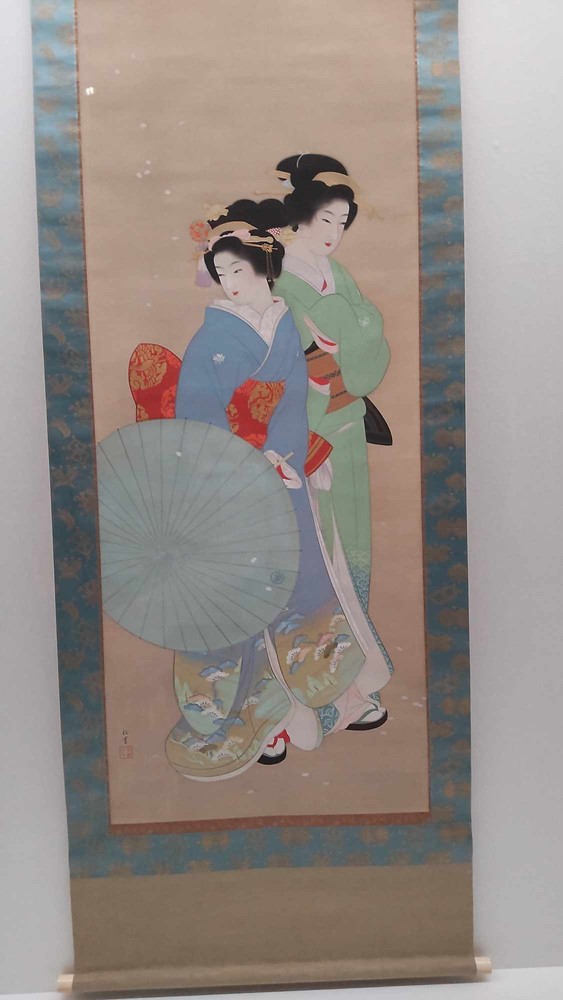
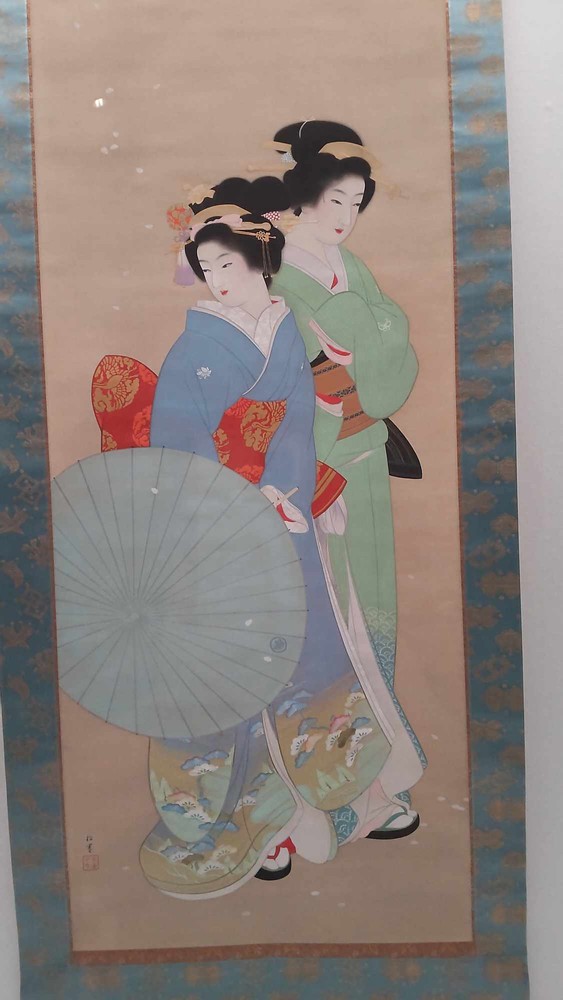
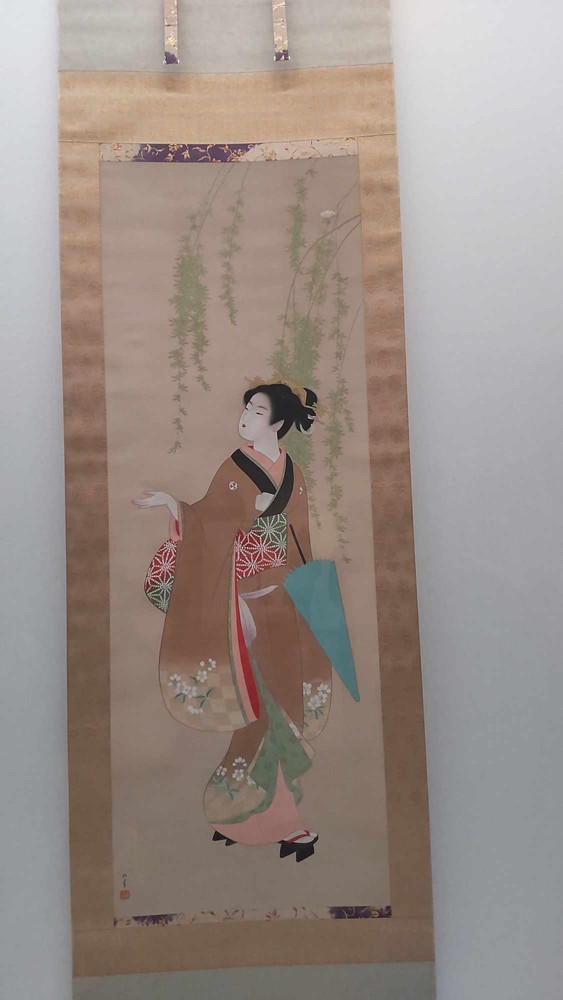
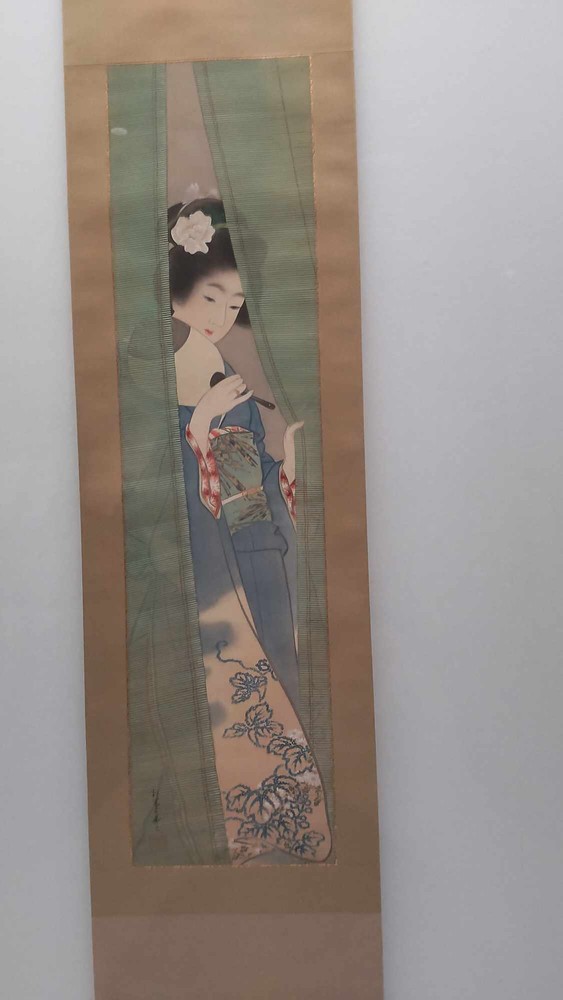
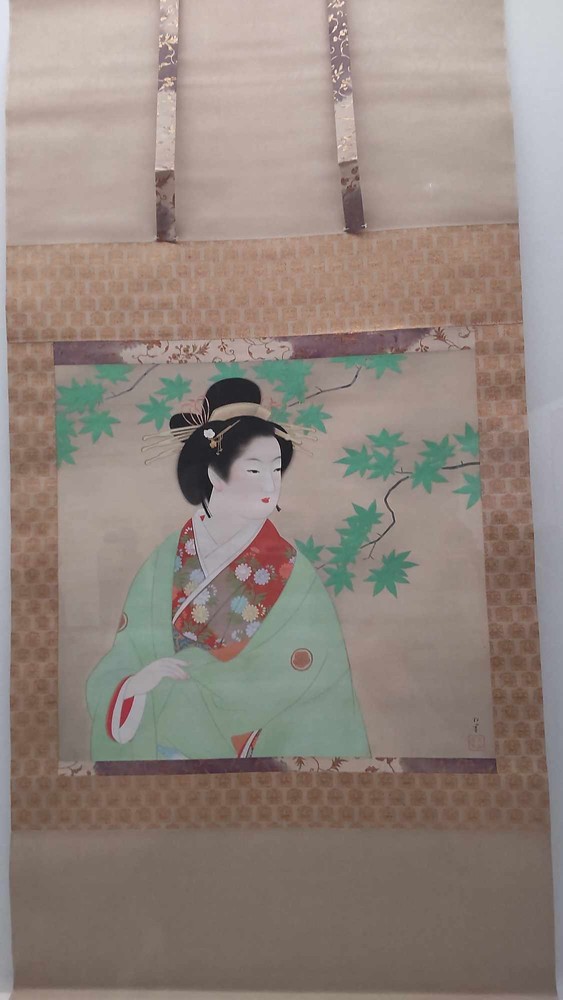
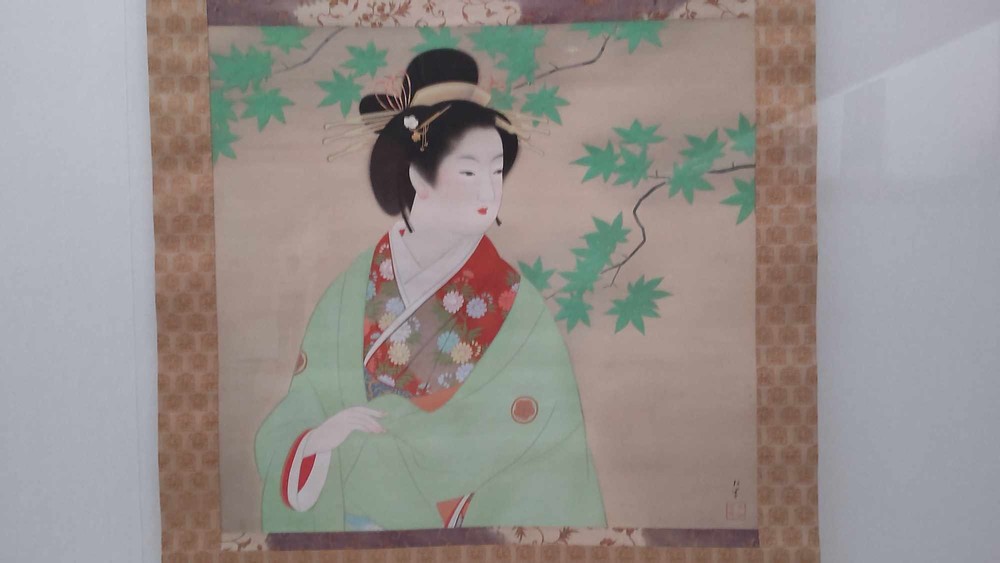
You might notice that many of her portraits feature similar faces. Surprisingly, all faces look alike her own face. I can't help but stop wondering she might keep painting herself.
Not only these completed paintings, but there were also lots of practice pieces, thumbnail pieces, drawings and more. These made me think she made lots of effort to reach her goals. I respect her deeply because she was a true pioneer in Japanese female painters.
At first, I was not so interested in her artworks. However, when I left the show, I found myself truly moved and impressed by her art.
(4888)
I can’t imagine sitting in the seiza position for hours. That must have been hard on the body.
素敵な絵ですね。Thank you for sharing, this style of painting is quite alluring, isn't it? People in the past seemed to have amazing patience and endurance. All the ladies have beautiful hairstyles.
@SEQ77 I totally agree. I don't think I can stand up after that, lol.
@via-chan Yes, people in the past used to have amazing patience and they'd created breathtaking art pieces, especially in the Meiji period.